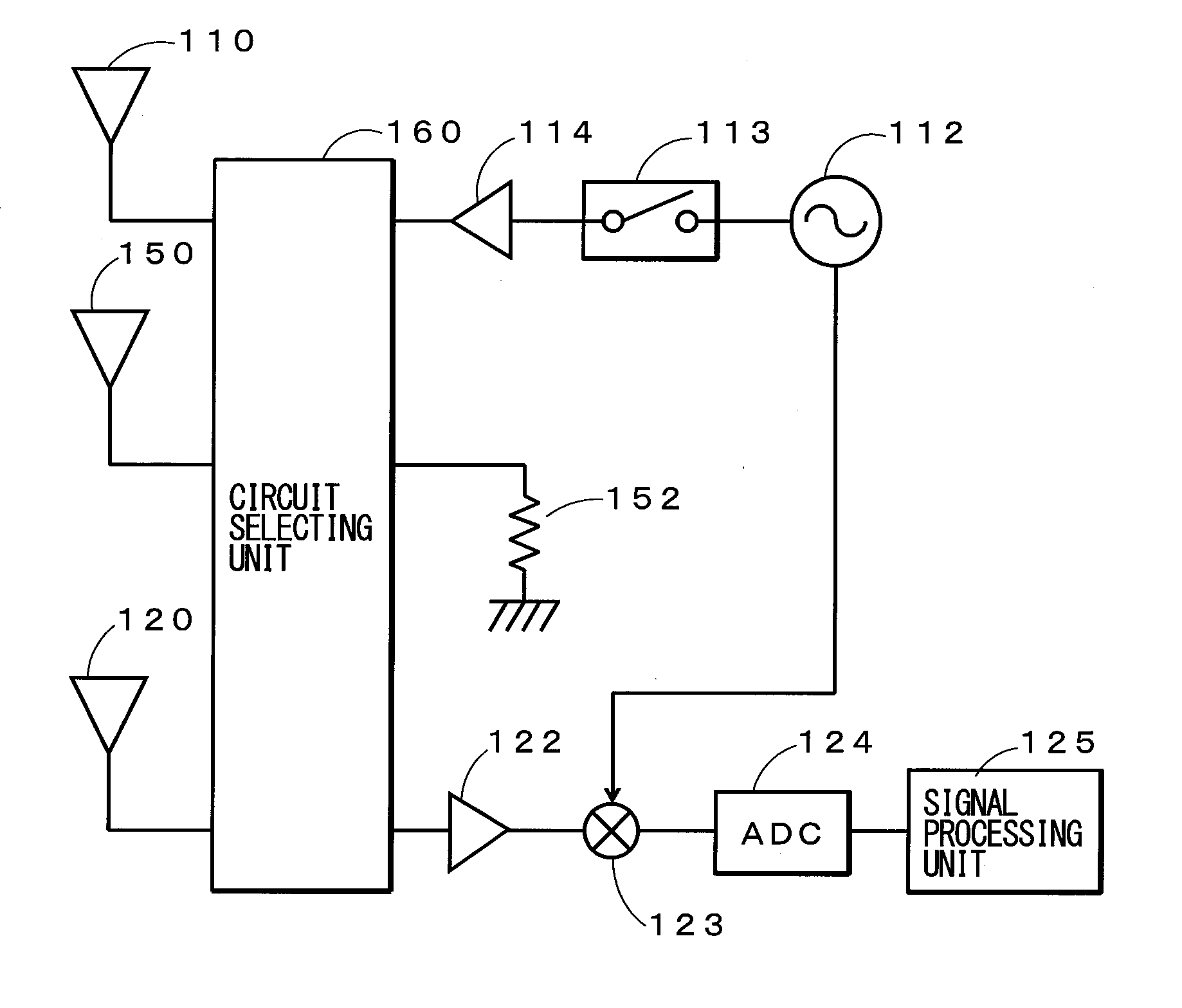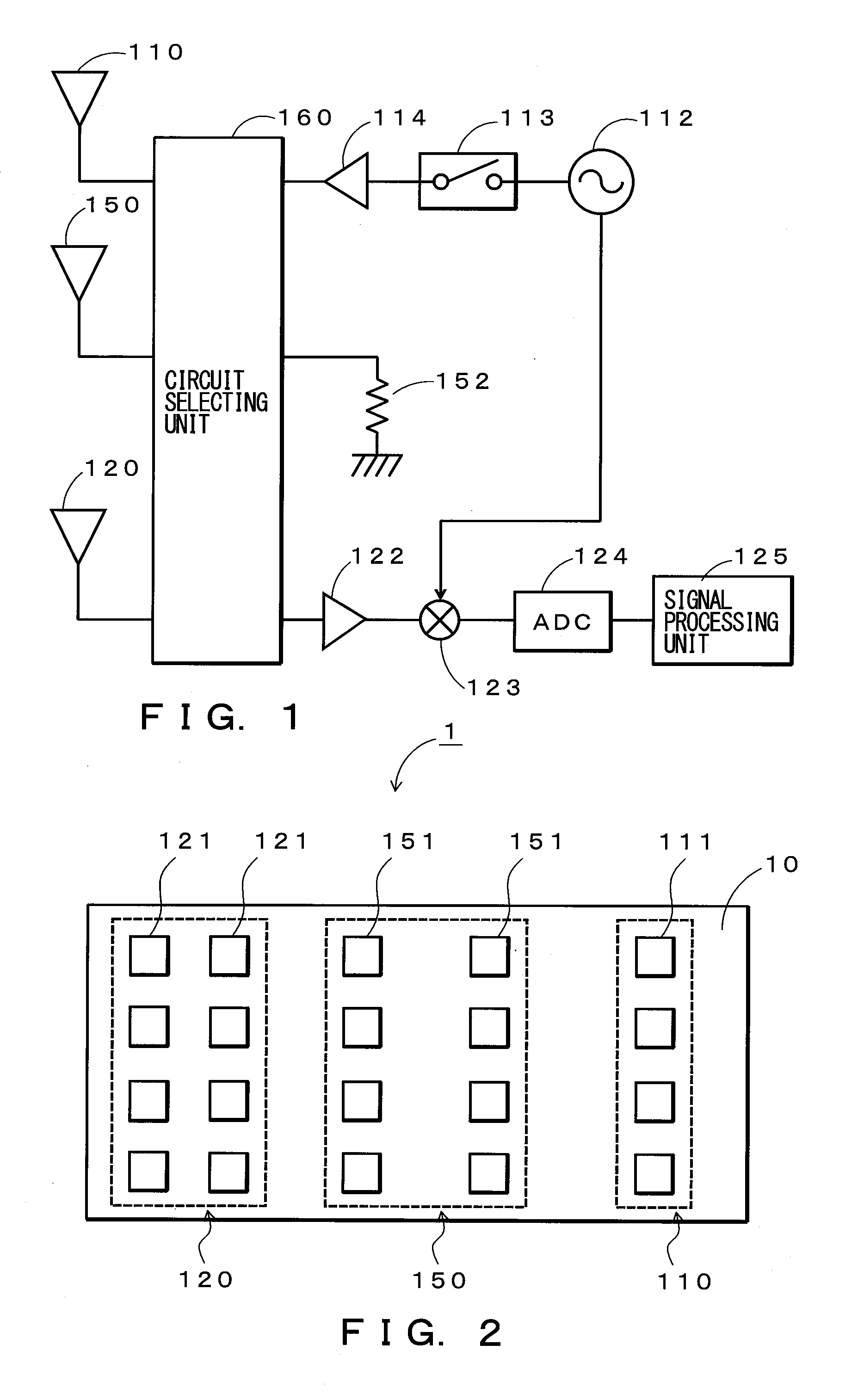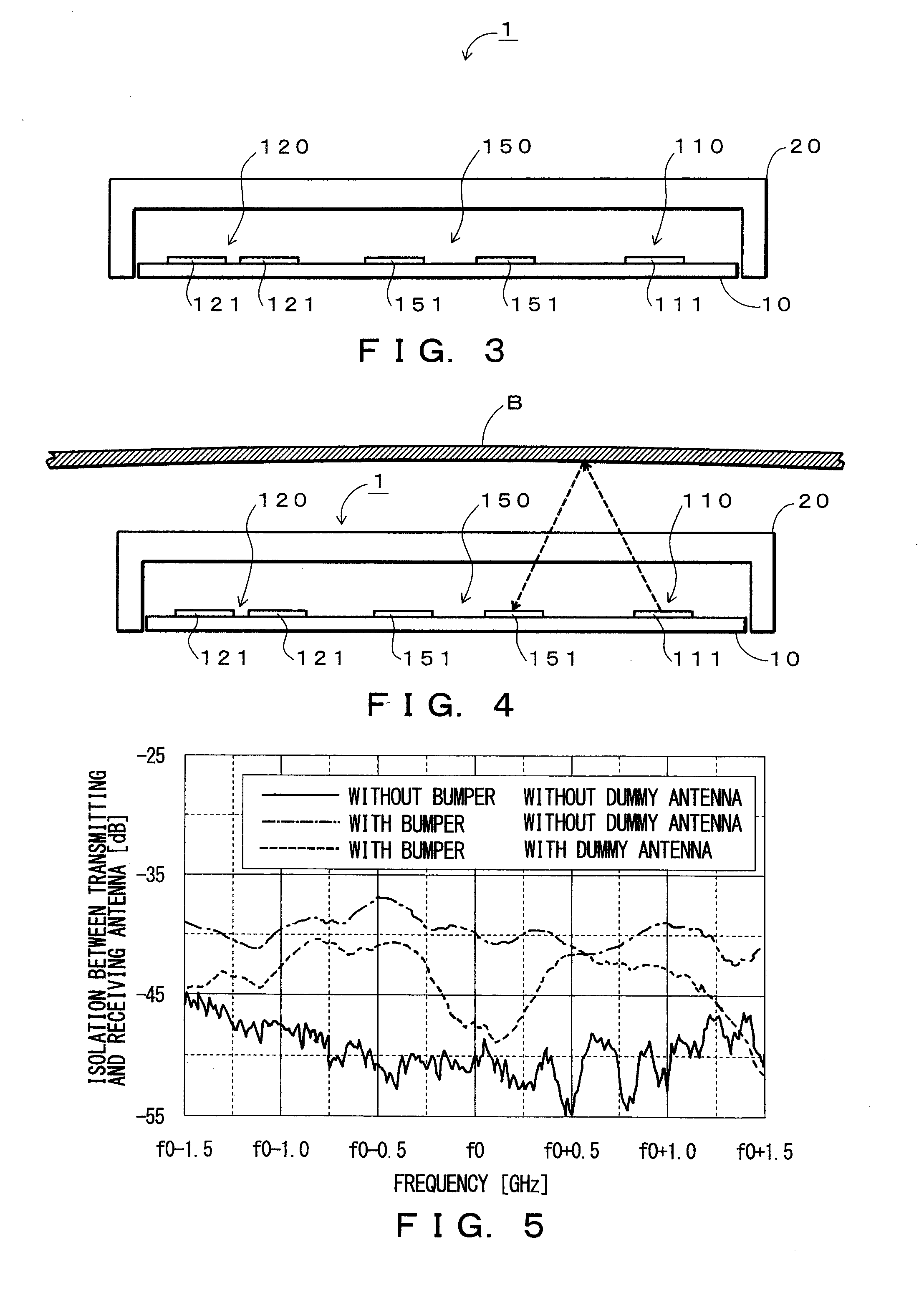Radar Device
- Summary
- Abstract
- Description
- Claims
- Application Information
AI Technical Summary
Benefits of technology
Problems solved by technology
Method used
Image
Examples
first embodiment
(B) First Embodiment
[0079]The first embodiment of the present disclosure will be described. In the first embodiment, configurations of the substrate 10 and the radome 20 are similar to those shown in FIGS. 2 and 3, but an electrical configuration differs. FIG. 7 is a block diagram showing an example of the electrical configuration of the first embodiment. Note that, in this figure, parts corresponding to those shown in FIG. 1 are accompanied by the same reference numerals and descriptions thereof are omitted. As compared to FIG. 1, the first embodiment shown in FIG. 7 has a switch 153 as the circuit selecting unit 160. The switch 153 has a terminal connected to the dummy antenna 150 and two selective terminals, in which one of the selective terminals is connected to an output terminal of the amplifier 114 and the other selective terminal is connected to one of the terminals of the resistance element 152. The switch 153 is controlled to select an output terminal of the amplifier 114 ...
second embodiment
(C) Second Embodiment
[0087]The second embodiment of the present disclosure will be described. In the second embodiment, configurations of the substrate 10 and the radome 20 are similar to those shown in FIGS. 2 and 3, but an electrical configuration differs. FIG. 9 is a block diagram showing an example of the electrical configuration of the second embodiment. Note that, in this figure, parts corresponding to those shown in FIG. 1 are accompanied by the same reference numerals and descriptions thereof are omitted. As compared to FIG. 1, the second embodiment shown in FIG. 9 has a switch 153 as the circuit selecting unit 160. The switch 153 has a terminal connected to the dummy antenna 150 and two selective terminals, in which one of the selective terminals is connected to a terminal of the resistance element 152 and the other selective terminal is connected to an input terminal of the amplifier 122. The switch 153 is controlled by a control unit, not shown, to select an output of the...
third embodiment
(D) Third Embodiment
[0095]The third embodiment of the present disclosure will be described. In the third embodiment, configurations of the substrate 10 and the radome 20 are similar to those shown in FIGS. 2 and 3, but an electrical configuration differs. FIG. 11 is a block diagram showing an example of the electrical configuration of the third embodiment. Note that, in this figure, parts corresponding to those shown in FIG. 1 are accompanied by the same reference numerals and the descriptions thereof are omitted. As compared to FIG. 1, the third embodiment shown in FIG. 11 has a switch 154 as the circuit selecting unit 160. The switch 154 has a terminal connected to the dummy antenna 150 and three selective terminals, in which one of the selective terminals arranged upper most in the figure is connected to an output terminal of the amplifier 114, a middle selective terminal is connected to the resistance element 152, and a selective terminal arranged lower most in the figure is con...
PUM
 Login to view more
Login to view more Abstract
Description
Claims
Application Information
 Login to view more
Login to view more - R&D Engineer
- R&D Manager
- IP Professional
- Industry Leading Data Capabilities
- Powerful AI technology
- Patent DNA Extraction
Browse by: Latest US Patents, China's latest patents, Technical Efficacy Thesaurus, Application Domain, Technology Topic.
© 2024 PatSnap. All rights reserved.Legal|Privacy policy|Modern Slavery Act Transparency Statement|Sitemap



